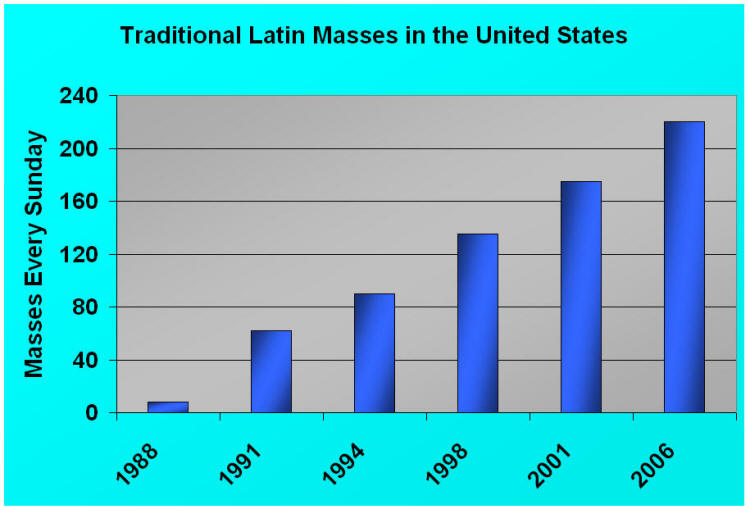In the last 24 hours, we've seen an incredible amount of bandwidth devoted to commentary and analysis of Pope Benedict XVI's Motu Proprio.
Some folks have recognized and celebrated the earth-shaking reality of SUMMORUM PONTIFICUM, others have loathed its publication for obvious reasons, and still others have characterized the document as "too little" or disappointing.
Some of us who comment have no formal education or training in Catholic theology or liturgy; other than twelve years of post-VII Catholic school (1st through 12th grade,) I have no education or credentials to formulate any groundbreaking commentary, and I have no connections to important people in high places whatsoever.
Like most blog readers, I'm just a rank-and-file Catholic. But all of us rank-and-file Catholics have common sense, and eyes to see and ears to hear.
Here's something I saw and heard today that proves to me that SUMMORUM PONTIFICUM is more than "just a tectonic shift."
Today, in the Diocese of Altoona-Johnstown, I witnessed a whole sermon on the subject of a papal document. The priest devoted his entire homily to Pope Benedict XVI's Motu Proprio, explaining in plain and strong words, the Pope's intention and reasoning.
And also explaining, in no uncertain terms, that this document grants to the individual pastor alone the right to decide if he will offer the traditional Latin Mass.
And from the pulpit, in a public sermon, he explained that the local bishop can no longer suppress this mass, and that, God willing, he will be offering the TLM in his parish weekly, immediately following the September 14 date established by the Pope for implementation of SUMMORUM PONTIFICUM.
Furthermore, he explained, he has been privately offering the TLM every evening in his parish church, in preparation for offering the TLM publicly in September.
This is the reality of SUMMORUM PONTIFICUM: a good priest, who up till now only offered the TLM in private and only ever dreamed of being "permitted" to offer this mass to his people -- who for fear of a disobedient bishop feared being discovered privately offering a low TLM in the quiet evenings in his own parish church -- has spoken out with zeal for the restoration of this mass, and with love and generous obedience to the Pope who made it possible.
Like the Pope, this priest made no apologies for his attachment to this mass today. Only 24 hours ago, he had never publicly expressed his desires.
So this is my SUMMORUM PONTIFICUM rank-and-file Catholic commentary:
SUMMORUM PONTIFICUM is good, very good.
It is more than we could have possibly hoped for, given the reality of our present day Church leadership, and given a "hope" limited to the human sphere.
Its fruits, only 24 hours post publication, are blossoming forth in irrepressible hope and joy and zeal.
God bless our Holy Father. God bless the many priests responding to the grace that this brave act on the part of our Pope has already brought forth. God bless the many faithful and courageous rank-and-file Catholics who never stopped hoping for this day.
And Thank You, Lord, for your Mercy and Kindness.




